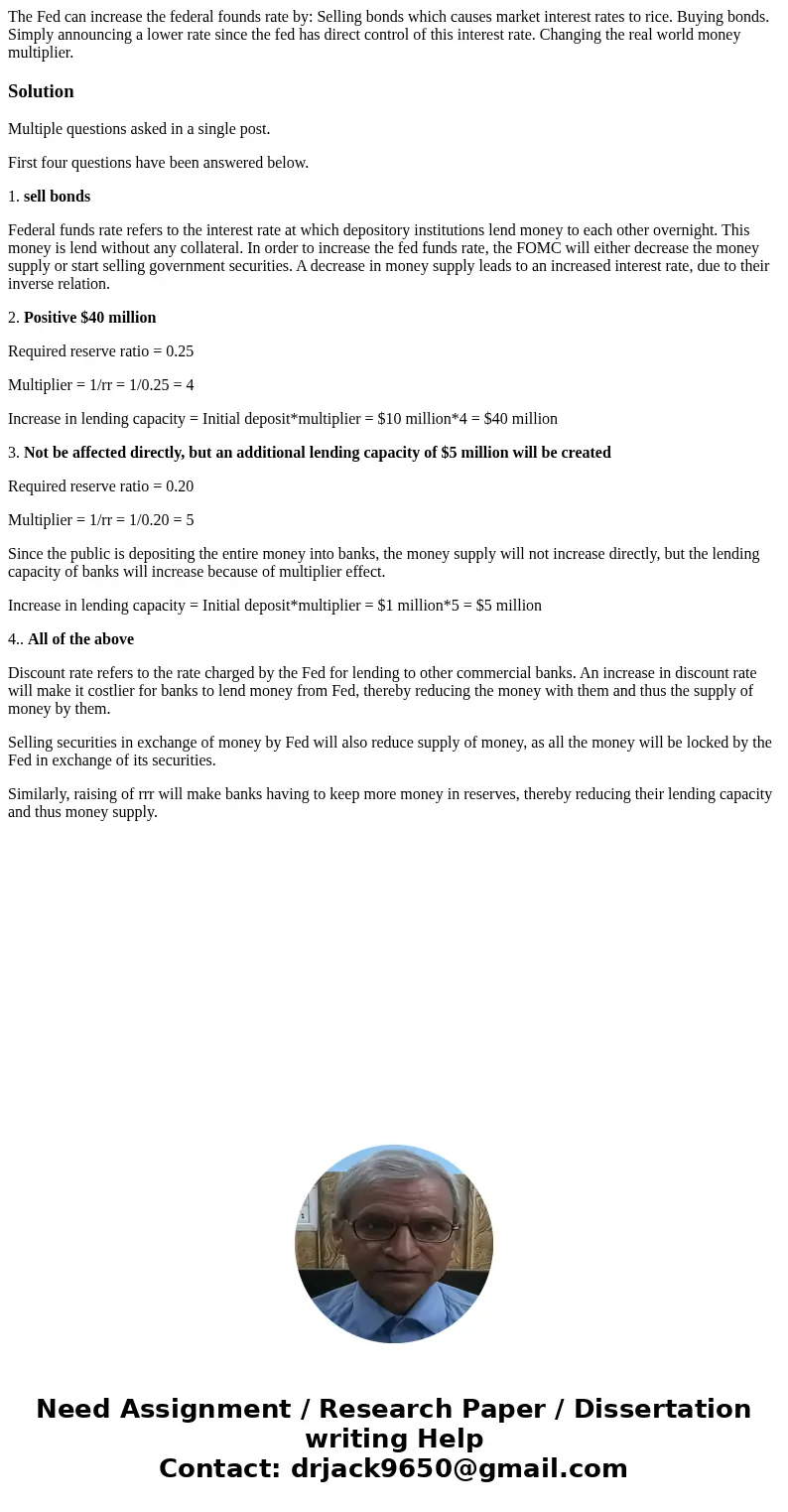The Fed can increase the federal founds rate by Selling bond
Solution
Multiple questions asked in a single post.
First four questions have been answered below.
1. sell bonds
Federal funds rate refers to the interest rate at which depository institutions lend money to each other overnight. This money is lend without any collateral. In order to increase the fed funds rate, the FOMC will either decrease the money supply or start selling government securities. A decrease in money supply leads to an increased interest rate, due to their inverse relation.
2. Positive $40 million
Required reserve ratio = 0.25
Multiplier = 1/rr = 1/0.25 = 4
Increase in lending capacity = Initial deposit*multiplier = $10 million*4 = $40 million
3. Not be affected directly, but an additional lending capacity of $5 million will be created
Required reserve ratio = 0.20
Multiplier = 1/rr = 1/0.20 = 5
Since the public is depositing the entire money into banks, the money supply will not increase directly, but the lending capacity of banks will increase because of multiplier effect.
Increase in lending capacity = Initial deposit*multiplier = $1 million*5 = $5 million
4.. All of the above
Discount rate refers to the rate charged by the Fed for lending to other commercial banks. An increase in discount rate will make it costlier for banks to lend money from Fed, thereby reducing the money with them and thus the supply of money by them.
Selling securities in exchange of money by Fed will also reduce supply of money, as all the money will be locked by the Fed in exchange of its securities.
Similarly, raising of rrr will make banks having to keep more money in reserves, thereby reducing their lending capacity and thus money supply.

 Homework Sourse
Homework Sourse